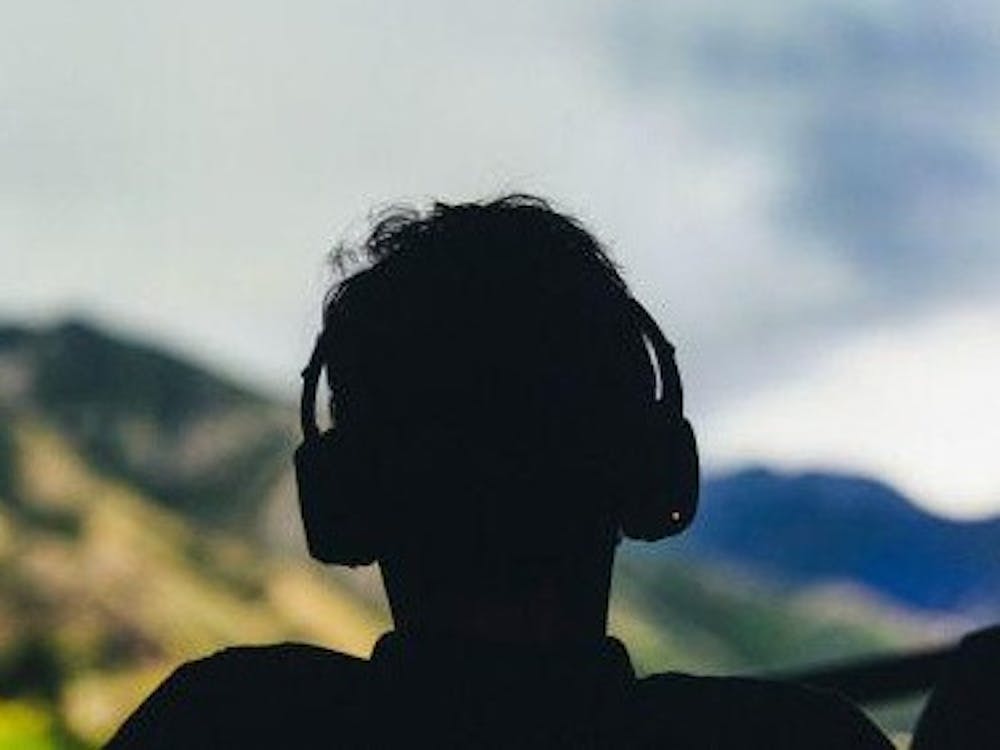If you’ve ever watched a documentary, the traditional format is quite simple: footage paired with recorded narration and a score. “32 Sounds” takes that idea in a different direction: both the narration and score are performed live. It is a live documentary, and it serves as a powerful meditation on the medium of sound.
As the name suggests, live documentaries incorporate real-time narration and music performed on site. This allows for a level of audience-film interaction that is rare in the documentary world, and creates an unparalleled level of intimacy, as the nature of live narration ensures that every show is unique.
Live documentaries are a signature format for Sam Green, creator of “32 Sounds” and Academy-Award-nominated journalist turned documentarian. His previous works in the subgenre include “The Love Song of R. Buckminster Fuller,” “The Measure of All Things” and “A Thousand Thoughts.” With “32 Sounds,” he explores the power of sound itself and how it bends time, evokes memories, crosses borders and shapes the way we see the world.
In making “32 Sounds,” Green partnered with Mark Mangini and JD Samson, alongside a number of other regular collaborators. Mangini is an Academy Award-winning sound editor who has worked on over 125 films. JD Samson is a producer, songwriter-musician and DJ whose work spans live performance, dance music, art punk and riot grrrl.
The film’s title is a nod to “Thirty Two Short Films About Glenn Gould,” a 1993 autobiographical film modeled after Bach’s Goldberg Variations. Upon entering Reynolds Industries Auditorium, audience members were given headphones, which initially played the sound of crickets so listeners could check that they worked. The show began — fittingly — with the sound of a womb, which Green said was the first sound anyone had ever heard.
From there, the documentary explored all sorts of sounds through deliveries and intensities. Viewers were sometimes instructed to close their eyes and listen to a single, soft sound; at other times, a loud cacophony took over the screen, and the audience strained to pick out any single sound. Green narrated throughout, while JD Samson on keyboard and Michael O’Neal on guitar provided the score. Along the way, the audience heard two sets of perspectives — sensory and scientific — on what it means to engage with sound.
The sensory perspectives come from the world of the arts, anchored by avant-garde musician Annea Lockwood. The audience witnessed the sounds of her provocative, boundary-pushing performances, from a burning piano to dozens of panes of glass being shattered to recordings of river water. Lockwood challenges the boundaries of what sound can and should be, portraying it as a communal experience and emphasizing that we usually “listen with,” not “listen to.” A foley artist provides another perspective, using sound to evoke experiences and tell a story. In one fascinating sequence, we watch her layer a number of sounds to mimic the experience of a tree falling in the woods. Other featured musicians offer further insights into sound as a sensory experience, including deaf sound artist Christine Sun Kim, who provides a unique perspective on how those without the ability to hear still engage with sound.
“32 Sounds” also engages in a more academic exploration of sound, exploring English polymath Charles Babbage’s theory that all sounds ever produced remain present, ready to be heard if we could just craft the right machine. The documentary also features Cheryl Tipp, Curator of Wildlife and Environmental Science, who helps the British Library manage one of the largest collections of recorded sound in the world. She plays and discusses what she considers to be the saddest sound in the world - the mating call of the last Moho Braccatus. A physics professor who studies sound and rocketry-related physics also provides scientific commentary on how we hear and record sound.
Bridging the scientific and sensory perspective is Green himself, who talks about different ways of recording sound and how it affects our experience. He highlights the discrepancies between diegetic movie sound — which is largely unidimensional — and the actual experience of listening, where sound comes from all around us. He discusses what sound has meant to him, referring constantly to his collection of recording tapes, many of which preserve the voices of people long since departed, including his brother. He marvels at how recordings can transport us through time.
The documentary’s approach is novel and profound. Rather than feeling gimmicky, the headphones and live elements play a pivotal role in the story. This is a documentary about hearing — one of the five senses — and it leans very heavily on that same sense to tell its story. The live narration and music — both of which are phenomenal — allow the documentary to do far more with sound than recorded audio or music would, heightening audience engagement. While the non-auditory aspects of the documentary are all well-done, the audio experience takes center stage — and rightly so.
Overall, the documentary is a profound exploration of the role of sound in human experience. It is hard to imagine what life would be like without the senses you currently have, or with ones you don’t. Yet despite this, or perhaps because of it, the documentary manages to present a multifaceted take on sound that captures much of what makes it so special. Sound is a scientific thing, but it is also so much more than that – a complexity “32 Sounds” masterfully captures.
Get The Chronicle straight to your inbox
Sign up for our weekly newsletter. Cancel at any time.
Zev van Zanten is a Trinity junior and recess editor of The Chronicle's 120th volume.

